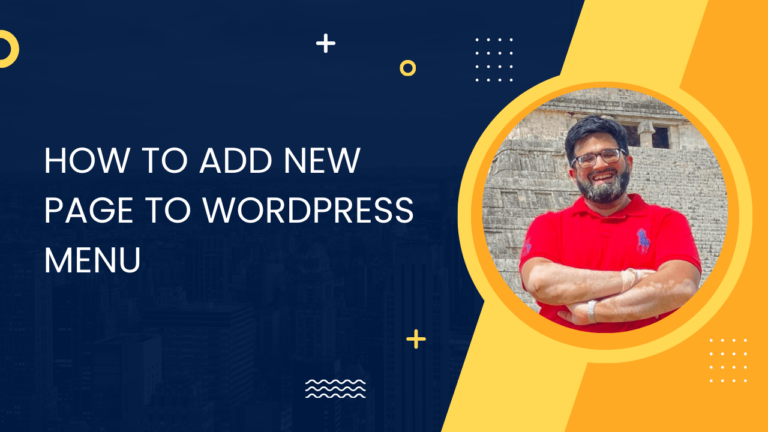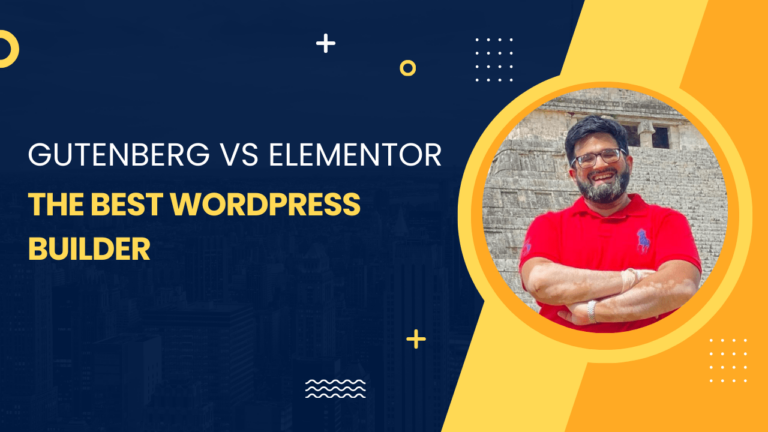Webflow vs Elementor: The Best in 2024
Webflow and Elementor are two powerful tools that aid in website creation, each with its distinct approach and capabilities.
Webflow is a full-featured website builder that allows you to construct professional websites using a visual editor. It offers a range of design, animation, and interaction tools without the need for extensive coding knowledge. As a standalone platform, Webflow includes hosting and handles all technical aspects, making it a comprehensive solution for website development from start to finish.
- Benefits:
- Integrated hosting
- Extensive customization options
- Advanced design capabilities
Elementor, on the other hand, is a WordPress plugin that enhances the site-building experience within the WordPress environment. It provides a drag-and-drop interface that simplifies the creation and editing of WordPress sites. Elementor is designed to be used with any WordPress theme, offering a balance between flexibility and ease of use.
- Benefits:
- User-friendly drag-and-drop editor
- High compatibility with WordPress themes
- Large library of widgets and templates
When comparing Webflow vs Elementor, consider your familiarity with WordPress and your specific needs for website design and development.
| Feature | Webflow | Elementor |
|---|---|---|
| Type | Standalone platform | WordPress plugin |
| Customization | Extensive and technical | Balance between flexibility and simplicity |
| Ease of use | Steeper learning curve due to advanced features | Intuitive for those familiar with WordPress |
| Framework | Proprietary framework | WordPress |
Both tools are popular among different audiences: Webflow being a go-to for designers seeking granular control over site design, and Elementor preferred by those looking to leverage the power of WordPress with an easy-to-use builder.
Design Capabilities
When choosing between Webflow and Elementor for your website projects, it’s essential to understand their design capabilities, which include the variety and quality of templates and themes, the level of customization and flexibility they offer, as well as the ease of use and learning curve associated with their interfaces.
Templates and Themes
Webflow provides a library of templates that are professionally designed and ready to use. These templates cater to a wide range of industries and styles while maintaining a responsive design from the start. In contrast, Elementor offers a multitude of themes through its integration with WordPress. Elementor’s vast array of themes allows you to lay the groundwork for your site, but the final design elements will depend on the WordPress theme you choose.
Customization and Flexibility
Customization is a strong suit for both Webflow and Elementor. Webflow allows for in-depth customization down to the finest design elements, thanks to its powerful visual editor. You have the flexibility to tweak animations and other interactive elements without the need for coding. In Elementor, the drag-and-drop interface simplifies the process of customizing blocks and content, though the complexity can increase when adding numerous plugins for extended functionality.
Ease of Use and Learning Curve
Ease of use is subjective; however, Webflow’s visual editor is designed to help you bring design concepts to life with minimal technical expertise. The learning curve can be steeper if you’re aiming to utilize all of its advanced features. On the flip side, Elementor’s drag-and-drop interface tends to be more straightforward for beginners, mainly if you have prior experience with WordPress, allowing for quick edits and the addition of design features on the go.
Functionalities and Features
When comparing Webflow and Elementor, you’ll want to consider a range of functionalities and features they offer to enhance your website building experience. These include the essential tools and features that allow for flexibility, scalability, and ease of use.
Building and Editing Tools
Webflow offers a powerful drag-and-drop editor that operates on a visual canvas, allowing you to craft responsive layouts with precision. Your design changes are reflected in real-time, giving you a high degree of control. Elementor also provides a drag-and-drop editor, complemented by a wide array of widgets to customize your site’s functionality and design.
Integrations and Plugins
Elementor shines with its vast library of plugins and add-ons, which seamlessly integrate with WordPress, providing you with an array of features to extend your site’s capabilities. On the other side, Webflow’s CMS is built-in, offering custom integrations without relying on a plethora of plugins, thus often resulting in a cleaner and more secure backend experience.
Ecommerce Solutions
If you’re building an online store, both platforms have you covered. Webflow’s ecommerce solution is integrated within the platform, allowing for easy setup and management of your online business. Elementor, used with WordPress, offers deep integration with WooCommerce, a powerful and widely-used ecommerce plugin, giving you robust options to manage your store.
SEO Tools and Marketing Features
You need your website to be found, and both platforms offer SEO tools to help improve your site’s visibility. Webflow has built-in SEO management tools designed to optimize your pages. With Elementor, you can leverage WordPress SEO plugins and marketing features to fine-tune your search engine strategy and track your marketing campaigns.
Responsive and Interactive Elements
For responsive websites that look great on any device, Webflow provides responsive design controls, allowing for the customization of different breakpoints. Elementor accommodates this need by offering a responsive mode where you can tailor the design for various devices. Both include interactive features to engage your users, with Webflow standing out with its unique interactions tools for advanced animations and effects.
Ease of Use and User Experience
When considering Webflow and Elementor for your website projects, understanding the ease of use and user experience each platform offers is essential. You’ll want an interface that’s intuitive, robust support options, and positive community feedback to streamline your workflow.
Interface and Workflow
Webflow presents a visual interface that allows for the manipulation of CSS, HTML, and JavaScript without requiring in-depth coding knowledge. The workflow is geared towards designers who appreciate a clean, drag-and-drop environment. Elementor offers a similarly user-friendly experience on the WordPress platform, with a visual editor that facilitates website building through a series of widgets and tools.
Support and Resources
Webflow:
- Webflow University: A comprehensive learning platform with tutorials for users of all levels.
- Customer Support: Access to a responsive support team.
Elementor:
- Tutorials: Plentiful guides available for getting started and advanced features.
- Customer Support: Offers a helpful support system for troubleshooting issues.
Community and User Feedback
Both Webflow and Elementor have fostered active communities. Webflow’s user base often highlights the platform’s powerful design capabilities and advanced features. As for Elementor, users appreciate its ease of use, especially for beginners creating WordPress sites, and the generous amount of resources available. Feedback from both communities often mentions a learning curve but also praises the continuous improvements and updates provided by both platforms.
Technical Aspects
Evaluating the technical aspects of Webflow versus Elementor involves understanding differences in hosting and performance, security and reliability, and the capacity for custom code and development.
Hosting and Performance
Webflow provides its own hosting solution, which is optimized for performance and scalability. This means that you do not need to seek external hosting services, simplifying the process. Webflow hosting leverages a content delivery network (CDN) to ensure your site loads quickly across the globe.
In contrast, Elementor is a plugin for WordPress, so your hosting and performance will depend on your WordPress hosting provider. You have the flexibility to choose a hosting provider that meets your performance requirements, potentially optimizing for speed and uptime.
| Feature | Webflow | Elementor |
|---|---|---|
| Hosting | Integrated CDN | Dependent on WordPress host |
| Scalability | Managed scalability | Varies by host |
Security and Reliability
Webflow manages security at the platform level, providing you with SSL certificates and constant monitoring. Your security is largely handled by the platform, leaving less for you to worry about.
With Elementor, security depends on your WordPress setup. It’s crucial for you to maintain regular updates and security patches. A dependable WordPress host will offer security features like SSL certificates, but it’s your responsibility to ensure they’re in place and up-to-date.
| Feature | Webflow | Elementor |
|---|---|---|
| SSL Certificate | Automatically provided | Depends on host |
| Monitoring | Platform-level | Plugin + WordPress updates |
Custom Code and Development
Webflow allows you to insert custom HTML, CSS, and JavaScript directly into your project, which can be a boon for developers looking to add specific functionalities or styles that are not available through the visual editor.
Elementor also supports custom CSS and HTML, but its WordPress environment means that developers have more control over the PHP code and deeper integration with the WordPress ecosystem. This can be especially advantageous if you’re working with complex plugins or custom post types.
| Feature | Webflow | Elementor |
|---|---|---|
| HTML/CSS | Yes | Yes |
| JavaScript | Yes | Via WordPress |
| PHP | No | Yes (WordPress) |
When it comes to technical aspects, you’ll find that Webflow offers an all-inclusive environment, whereas Elementor grants you more control over your hosting and deeper coding capabilities tied to WordPress.
Pricing and Value
When considering Webflow and Elementor for your website projects, understanding their pricing structures is crucial. Both platforms offer different tiers catering to various needs, from casual users to professional designers.
Webflow operates on a tiered pricing model, which includes:
- Free Plan: Ideal for trying out the platform’s basic features.
- Site Plans: Begin at $15 per month and scale up, focusing on individual site hosting and advanced features.
With Webflow, you typically pay more for higher-tier plans, which offer added capabilities such as custom code, site export, and e-commerce integration.
Elementor Pro, on the other hand, is a premium WordPress plugin with an annual cost:
- Pricing: Starts from $49 per year for a single site license.
- It is an add-on for the free version of Elementor, which provides advanced design features and tools.
Your decision may hinge on both the cost and the value these platforms provide. For instance:
- Elementor Pro is a cost-effective solution if you’re already invested in WordPress.
- Webflow could be your comprehensive, standalone solution, without needing WordPress, but at a typically higher monthly cost.
Here’s a simplified breakdown:
| Service | Free Plan Available | Starting Price | Ideal for |
|---|---|---|---|
| Webflow | Yes | $15/month | Site-specific design |
| Elementor Pro | No (Free version available) | $49/year | WordPress users |
Carefully assess your project requirements against each platform’s offering to ensure you’re getting the right value for your investment.
User Base and Applications
In choosing between Webflow and Elementor, it’s essential you consider who typically uses these platforms and for what types of projects. Your role – whether you’re a developer, designer, or running an agency – and the project’s scale can largely dictate which builder suits your needs best.
Agency and Freelancer Use
Agencies and freelancers cherish flexibility and efficiency. Webflow tends to be preferred among designers for its strong design control and wealth of built-in features, making it a comprehensive platform for those who manage multiple clients’ websites. In contrast, Elementor, working atop WordPress, offers an extensive library of widgets and plugins, appealing to those who require deep customizability or are already familiar with the WordPress ecosystem.
Enterprise and Large Projects
When it’s about managing enterprise-level projects, your choice may tilt towards Webflow for its robust hosting solutions and teamwork-oriented features like Client Billing and Team Collaboration. Its ability to handle complex designs and interactions without direct coding can be advantageous. Conversely, Elementor also supports large-scale website development but may require additional plugins for refined control, which could be more familiar terrain for developers with WordPress experience.
Personal and Small Business Websites
For personal projects and small business websites, ease of use is often paramount. Elementor’s drag-and-drop builder atop WordPress is highly intuitive for those who might not have a background in web design but wish to leverage the power of a vast community and endless customization options. On the other hand, Webflow’s all-in-one solution offers a more streamlined approach, with the ability to design, host, and manage websites within a singular user-friendly interface.
Comparison and Conclusion
In this section, we’ll dissect the strengths and limitations of Webflow and Elementor, equipping you with a balanced overview to make an informed decision on the ideal tool for your website building needs.
Pros and Cons
Webflow:
Pros:
- Offers a high degree of design control and customization capabilities.
- Extensive site and account plans, catering to a range of needs.
Cons:
- May present a steep learning curve due to its advanced features.
- More complex than basic drag-and-drop builders.
Elementor:
Pros:
- User-friendly with its intuitive drag-and-drop interface.
- WordPress integration makes it ideal for users already within that ecosystem.
Cons:
- Limited by WordPress constraints; not a standalone platform.
- Plan options may seem restricted compared to the breadth of Webflow’s offerings.
Final Recommendations
If you prioritize complete design freedom and have the time to master its tools, Webflow is a robust choice. It serves well for both individual design projects and scalable solutions for web design professionals and agencies. On the other hand, if simplicity, ease of use, and seamless WordPress integration rank high on your list, Elementor emerges as a practical pick. It’s suited for those who seek to construct a basic to an intermediate website quickly, with the familiarity of the WordPress environment. Your selection should align with your proficiency, project scope, and desired level of control over the web design process.
Frequently Asked Questions
In this section, you’ll find concise, factual answers to common inquiries about Webflow and Elementor, two prominent website building platforms.
What advantages does Webflow offer compared to traditional WordPress for web design?
Webflow provides a visual design interface that allows for real-time design and development, enabling you to build custom websites without extensive coding knowledge. It simplifies interactions and responsive design with user-friendly tools, distinguishing itself from traditional WordPress themes that might require more technical intervention.
What challenges might users face when using Elementor with WordPress?
Users might encounter a learning curve with Elementor when dealing with complex WordPress themes that require a deeper understanding of WordPress’s structure. Compatibility with other plugins and themes might also pose challenges, requiring troubleshooting to ensure seamless site operation.
Why might professionals opt for Webflow over other website builders?
Professionals may choose Webflow for its comprehensive toolkit that provides precise control over website design and development. It offers CMS capabilities and intricate animations and interactions that are often not as quite extensive in other website builders.
How does Webflow’s SEO capabilities compare to those of WordPress?
Webflow offers robust SEO tools that allow for on-page optimizations with automatic sitemap updates, editable metadata, and semantic HTML5 elements. While WordPress also has strong SEO capabilities, particularly with plugins like Yoast SEO, Webflow integrates many such features natively.
Are there alternative page builders that surpass Elementor in functionality or ease of use?
Some users might find that builders like Beaver Builder or Divi offer competitive features or user interfaces that may seem more intuitive or more flexible in certain contexts. However, ‘surpass’ is subjective and will depend on your specific web development needs and preferences.
What are the key benefits and downsides of using Webflow for web development?
Key benefits of Webflow include the ability to execute complex design visions without coding knowledge and the platform’s hosting reliability. However, users might find the learning curve steep due to advanced features, and Webflow’s free plan visitor limit could restrict growing websites.






